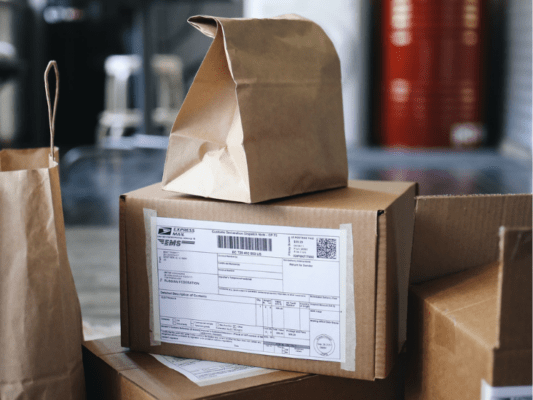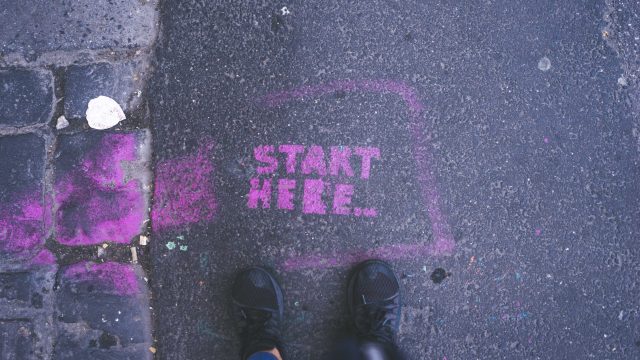Dropshipping sounds like a dream business model – there’s no need for you to hold inventory and there’s no need for you to do anything with fulfilment. However, while dropshipping is still a viable business model in 2023, can you do it with no money down?

Unfortunately, no, you can’t. There isn’t a way to start a dropshipping business with absolutely no money up front whatsoever, but there are ways you can reduce the cost involved, as well as exploring other alternatives to dropshipping on Amazon which may work better for you.
In this article we’re going to run through a little bit about what dropshipping is, why you might want to avoid doing it on Amazon, and what you should do instead.
How does dropshipping work?
Dropshipping basically means that you’re selling items you don’t own. While this may sound strange, all it means is that you have an agreement with a supplier to ship to your customers as and when they place an order.
You then list certain items for sale, either on an online marketplace like Amazon or eBay, or on your own website. When a customer places an order, you then place an order with your dropshipping supplier who then ships the item directly to your customer. You charge your customer more than what you pay to your supplier, and you pocket the difference.
Obviously the main benefit to this is that you don’t have to hold a huge amount of stock upfront – your supplier holds it for you. Therefore, if you don’t sell anything, you don’t lose any money. This can make starting a dropshipping business a cost-effective option if you don’t have the cash available upfront to purchase stock.
The downside to this model is that as the seller, you have little control over the condition or quality of the items you sell because you never actually take ownership of them. You also have no control over the speed of the shipping or the care taken in transit. Your supplier doesn’t have an incentive to keep your customer happy – they only have an incentive to keep you happy, and therefore, if they ship a defective or damaged item, you’re the one that has to pick up the pieces.
This is why Amazon has very, very strict rules on what and how you dropship on their platform.
What are Amazon’s rules on dropshipping products?
Amazon wants to give its customers the best possible experience with all third-party sellers on its platform, so to avoid customer confusion they have implement the following rules to make sure all sellers give a consistent experience for purchasers:
- All invoices, packing slips and external packaging that come with the product sold must identify you as the seller of the product purchased. None of these can feature details of the manufacturer’s name or business.
- Sellers cannot use the supplier’s or manufacturer’s name in any of the product packaging materials or Amazon store product descriptions.
- The seller is completely responsible for accepting and processing returns.
- All sellers must adhere to the wider “Comply with Amazon Terms of Service”, according to the seller agreement.
The above conditions don’t make it impossible to dropship using Amazon, but they do make it very difficult – in our opinion, more difficult than it’s worth for small time sellers. If you’re planning to source your products from retailers, you may think that you can just order from the retailer directly to the customer, but this will put you in violation of Amazon’s policies and you’ll probably get your account banned. Sure, you could order the item to your own home and then remove all the packaging, invoices or anything else that identifies the retailer – but this kind of ruins the whole point of dropshipping which is for you to be hands off when it comes to shipping and fulfilment.
This isn’t the only consideration you have to take into account if you want to dropship on Amazon. It’s worth remembering that it’s you as the seller that is taking all the risk. You’re very unlikely to have a live stock feed from your supplier. It’s inevitable that eventually you’ll advertise something for sale and the supplier will come back and say “sorry, that thing’s on back order for two weeks.” You now need to have an awkward conversation with your customer about why you were advertising something that you didn’t have in stock.
If you repeatedly break the dropshipping guidelines or repeatedly have to cancel orders because your supplier can’t fulfil orders, Amazon will mark this against your seller account which could lead to your account being suspended or even terminated.
So considering this, are there any other ways that you can still make money on Amazon without having to dodge all the risks and pitfalls or dropshipping? Yes, there is – and it’s called retail arbitrage.
What are the alternatives to dropshipping on Amazon?
Retail arbitrage is not a new concept but it’s one of the most effective ways to make money on Amazon without assuming all the risks associated with dropshipping. Retail arbitrage sounds fancy but it’s actually a really simple concept:
- You find an item that you can buy from a retailer for $x and sell it for more than $x.
- You buy the item.
- You ship the items to Amazon using FBA.
- You list the item for sale on Amazon.
- Your customer buys the item.
- Amazon ships the item to the customer and pays you.
Now, you do have to put in a bit of money upfront but the main benefit of doing this is that you can now sleep at night, not worrying about whether your account is going to get banned. Amazon is perfectly fine with retail arbitrage – in fact, they actually encourage it, whereas they heavily discourage dropshipping. You can find out more about retail arbitrage and how it works in our helpful guide: The ultimate guide to Amazon retail arbitrage in 2023.
Additionally, you’re only getting involved in the sourcing of products – the shipping and fulfilment is handled completely by Amazon (you can also do this yourself if you want to, but we’d recommend getting Amazon to do it through FBA.) This makes your business a lot more scalable and efficient, as you’re free to focus on finding profitable products and not worrying about whether your dropshipping supplier is going to come back and tell you they can’t fulfil an order.
However, by far the biggest benefit of running an online arbitrage business is that you’ve got a greater scope of suppliers that you can source products from. You aren’t restricted to using a limited number of unknown dropshippers. Instead you can tap into basically any US retailer that sells products that are also sold on Amazon. All of these factors make retail arbitrage a far more sensible and potentially profitable enterprise than dropshipping on Amazon, but it can seem rather daunting to source products – for example, do you have to trawl through retailer’s websites, hoping to find something you can make a little money on?
Well, no. That’s where SourceMogul comes in. SourceMogul allows you to search for millions of products every day from some of the biggest retailers in the US to try and find the best deals possible. The tool also allows you to calculate your profitability and helps you choose which products are best for you to sell online and start making money on Amazon. It even tells you how many products it expects will be profitable – making your product sourcing very, very easy.
We’ve got a number of guides and articles on how to use SourceMogul, but the best way to learn and identify your next profitable item is to sign up for a no-obligation, 7 day free trial, which you can do using the button below.
Dropshipping on Amazon Frequently Asked Questions (FAQs)
Can I dropship on Amazon for free?
Unfortunately, there is no way you can dropship on Amazon without incurring any additional costs. Even if you sign up for their basic Individual Sellers Account, you are still obligated to pay $0.99 for every item you sell and not only this, you’re restricted to selling a maximum of 40 items per month. You can remove this item limit by signing up for the Professional seller account at a cost of $39.99 per month.
Has Amazon banned dropshipping?
No – Amazon has not explicitly banned dropshipping. They do, however, include some pretty restrictive clauses around it and if you violate these terms, you could have your account shut down. Fundamentally, Amazon requires that you:
- Ensure your shipping materials identify you as the seller of record – i.e. you cannot take an order on Amazon and then go onto Kohl’s or Walmart and ship the item directly to the customer, as in this case Kohl’s or Walmart would be identified as the seller and not you
- Ship your products with a packing slip, invoice or external packaging that identifies the product as coming from you and nobody else
The reason for this is that it creates huge confusion for a customer to order from you on Amazon and see a Walmart box arrive at their home. You’re also likely to experience problems as the user might go onto Walmart’s website and see that the price there is less than what they paid – leading to a very unhappy customer who may request a refund.
Is dropshipping legal?
Dropshipping is a pretty widely used business model, and yes, it is legal. You may find that if your legal liability with your dropshipping suppliers is not explicitly defined then there’s the possibility of you having to deal with legal issues if the relationship turns sour, but the act of dropshipping – advertising products for sale and then ordering/shipping them when you receive an order – is perfectly legal in the US.
Can I use SourceMogul for drop shipping?
If you want to dropship somewhere other than Amazon, it is still possible to use SourceMogul as a tool to find profitable items to sell. The platform has live sales data which allows you to identify products which can be sold for a profit, whilst comparing prices with 100’s of other retailers.
We offer a free seven day trial for you to make your mind up on whether SourceMogul is helping you with your dropshipping. Check it out using the button below.
More strategy
-

6 steps to becoming an Amazon seller. No experience needed.
Becoming a successful Amazon seller is easy - the Amazon brand and logo represents…
-

Top tips for success from a new Amazon seller
We've compiled a list of the top tips for new sellers, gathered from a…
-

How to get ungated on Amazon – your guide to Amazon restricted categories
If you’re looking to expand your online arbitrage business, you might find yourself tempted…
-

How to prepare for Amazon Q4 trading
Every year the holiday season seems to come around a little earlier. As an…




